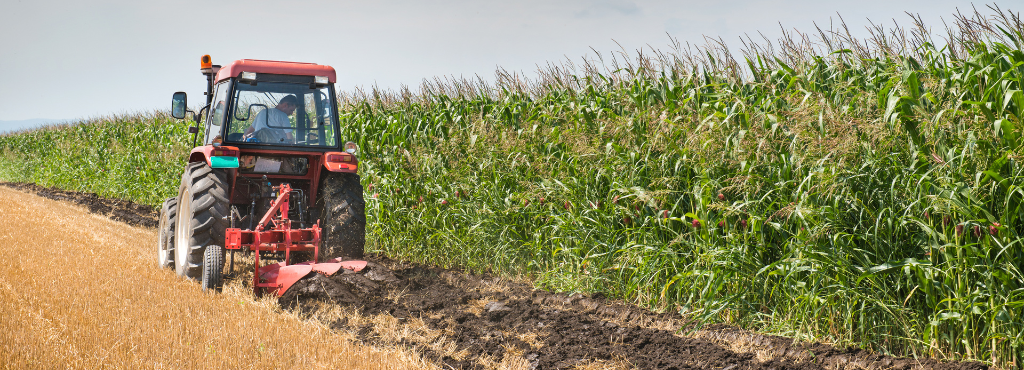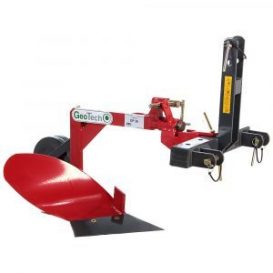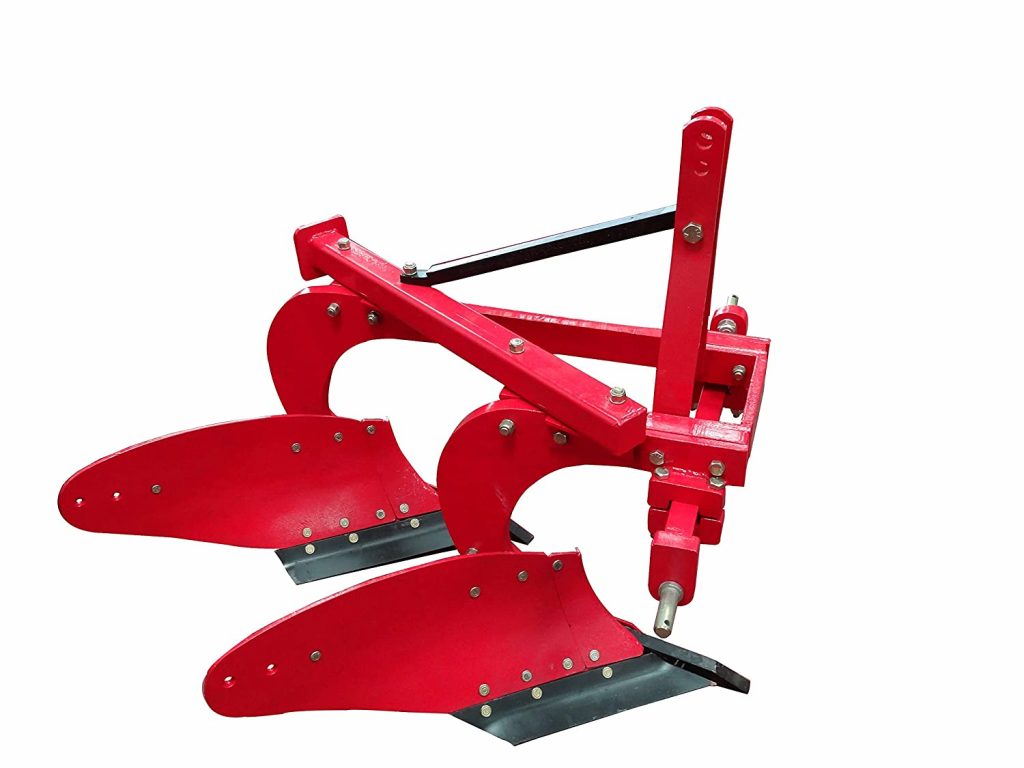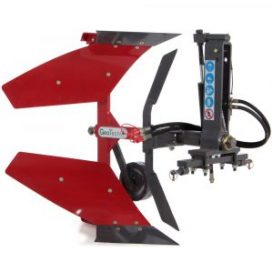A comprehensive purchasing guide to tractor ploughs, with all their main functions and features.
The Complete Guide to help you choose the Best Tractor-mounted Ploughs
by the Real Experts of Tractor-towed Agricultural Machinery
1. Introduction
The plough is a farm tool for loosening or turning the soil following crop rotation and to prepare it for planting or sowing. The working depth varies from shallow ploughing of 10-20 cm, to deep ploughing of 50-60 cm, depending on the purpose of the work.
Ploughing is historically one of the oldest activities, previously carried out with single furrow ploughs drawn by horses or oxen. Originally, the plough was usually a wooden and straight tool used to create a furrow in the ground and simply break up the first soil layer. Later modifications allowed to make the plough capable of lifting sods of earth (i.e. slices of the topsoil) that has been cut and rolling them over.
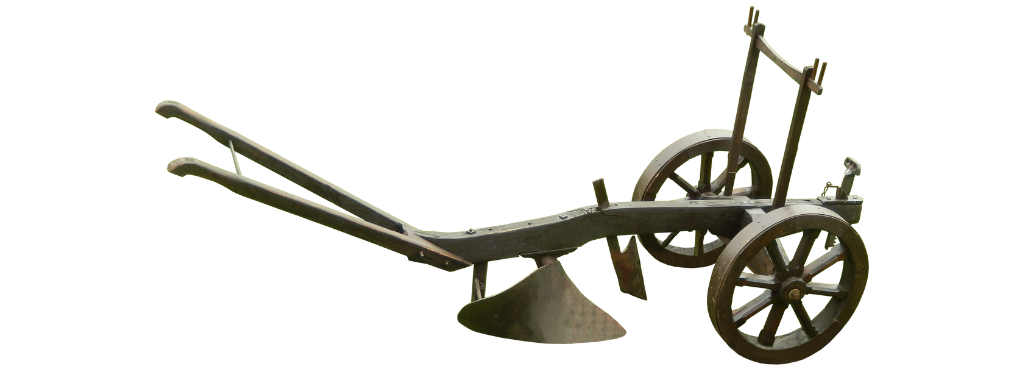
As time went by, thanks to technological development and agriculture modernisation in general, came the possibility of moving from animal to mechanical traction. There has been a shift from single furrow ploughs to manual, and later hydraulic, turnwrest ploughs, which offer better working speed and greater depth.
Nowadays, especially on large farms with large plots, modern agricultural machinery pull ploughs with up to 15 furrows per side in order to cover greater distances and turn over more soil at a time.
2. The main components of the plough
A plough consists of a main body to which the working parts (furrow and mouldboard), the working depth and side tilting adjustment regulator and the three-point attach to the tractor are connected. The latter can be of different categories depending on the size of the pins and holes.
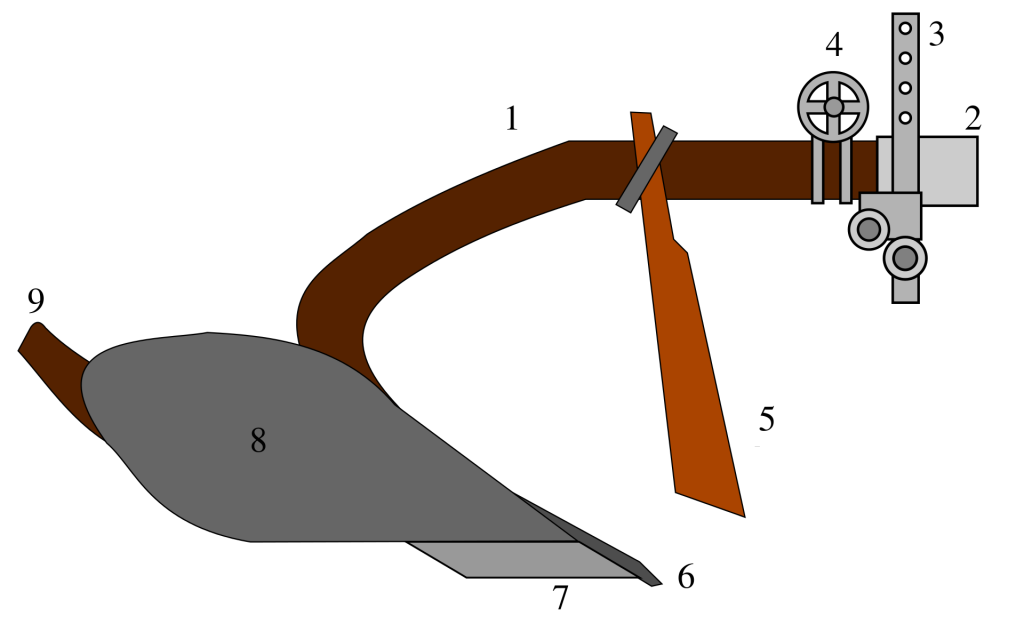
- Frame (main structure)
- Three-point-hitch (connection to the tractor)
- Height regulator (it allows to set the different working depths)
- Side tilting regulator (it allows the plough to be tilted or moved sideways)
- Colter or blade (it allows to perform vertical cuts on untilled soil; not always present)
- Chisel (used to penetrate soil)
- Ploughshare (it allows to cut the clod horizontally)
- Mouldboard (it allows to overturn pieces of topsoil)
- Mouldboard extension (it facilitates earth clods overturning)
3. Soil tillage: ploughing
Ploughing is the first stage to prepare the soil for seeding. The tractor-mounted plough belongs to the category of agricultural machinery and can be classified as a tool whose function is to perform soil overturning, as it carries out a combined action of cutting, lifting and rolling over sods of soil. The prime purpose is to turn over the uppermost soil while burying weeds and crop remains to decay.
The best result requires a combination of various factors both of the terrain and of the machine itself. The optimum condition for tilling is when the soil is temperate, i.e. when its moisture content allows tilling with minimum effort and achieve the best possible results. Other factors included are the number of working parts, the working depth and width.
An important distinction made in modern ploughing is between on-land and in-furrow operations:
- On-land operation: the tractor is positioned with all four wheels on the non-tilled soil;
- In-furrow operation: the tractor is positioned with two wheels on the hard soil and two wheels on the furrow made in the previous passage, which means that the machine is tilted towards the soil that has already been worked.

On land operation 
In-furrow operation
Nowadays, the use of increasingly larger and heavier ploughs and tractors, has led to a phenomenon called plough slab, which consists of the progressive crushing and hardening of the furrow bottom caused by the ploughshare. As a result, with the passing of time and the changing of seasons, the slab does not allow water, roots and nutrients to pass through the soil, with negative consequences for crops. To overcome this particular but frequent problem, it is necessary to vary the tillage depth at each crop rotation.
In addition to classic ploughing, another widely employed operation that involves the use of single furrow ploughs (much larger than traditional ploughs) is deep tillage. The plough works between 80-120 cm deep into the soil and is used both for looseing on soil that has not been tilled for over 10 years and for planting tree crops such as vineyards, olive groves or apple orchards.
4. Types
There are various types of ploughs that are used depending on the characteristics of the soil and climatic conditions. In fact, ploughs can be classified according to the number of mouldboards, the type of work and the way the clods of earth is turned over. The most common types include:

Tractor-mounted plough with short ploughshare 
Tractor-mounted plough with helical mouldboard 
Tractor-mounted turnwrest plough
- Tractor-mounted plough with short ploughshare (single furrow): it is mainly used on soft, loamy and sandy soils for light tillage;
- Tractor-mounted plough with helicoidal mouldboard: one of the most widespread tool in Italy for tillage, is used on fine textured soils grave; with a high presence of colloidal minerals. The plough cuts the soil while the helical mouldboard lifts and rolls the sods of earth sideways, thus creating the furrow. In this way, the sod is moved and turned over gently, while avoiding crumbling;
- Tractor-mounted turnwrest plough: it allows the soil to be turned over in the driving direction of the tractor for faster tillage compared to the traditional fixed single furrow plough. To change the direction of sods overturning, it is necessary to make a 180° rotation at the end of the field.



